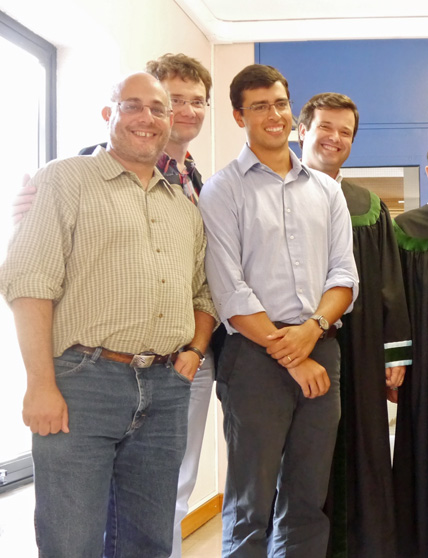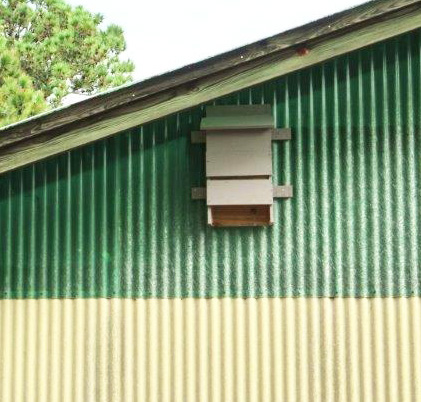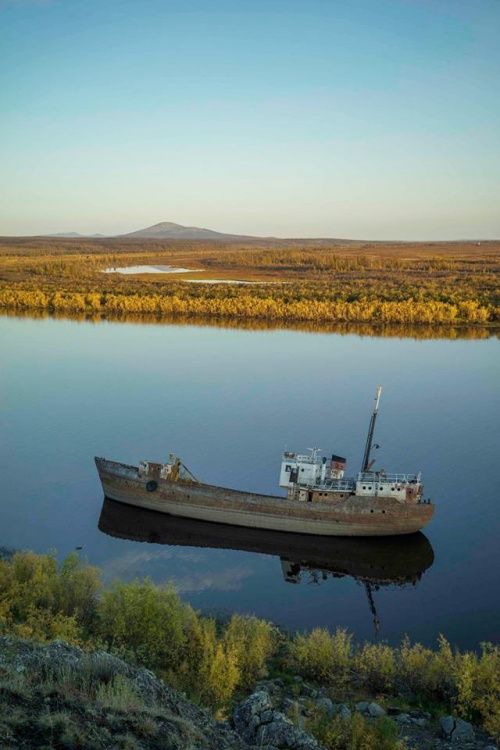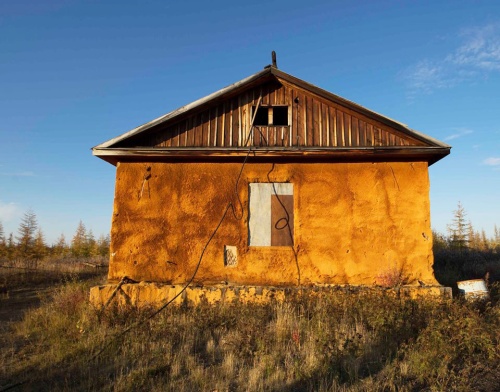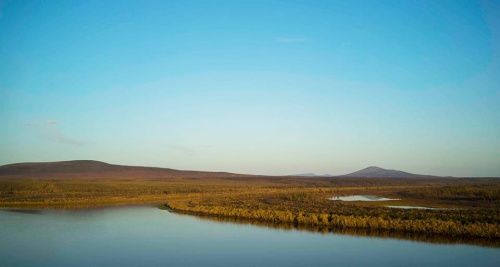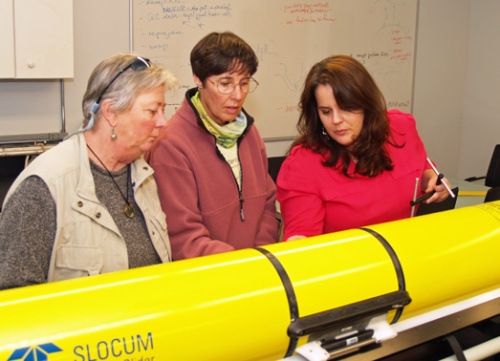There are plenty of new faces on campus this month, including four new staffers at Gray’s Reef.
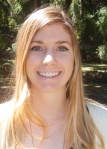 Abbigail Rigdon Murphy has joined Gray’s Reef as a temporary outreach program assistant. A former education intern at Gray’s Reef and current educator at the Tybee Island Marine Science Center, Abbigail received her Master of Professional Science Degree in Marine Conservation last December from University of Miami’s Rosenstiel School of Marine and Atmospheric Science. She will assist with outreach and education activities, including support of competitions and events, education materials requests, scheduling and providing community presentations, and assisting with website updates.
Abbigail Rigdon Murphy has joined Gray’s Reef as a temporary outreach program assistant. A former education intern at Gray’s Reef and current educator at the Tybee Island Marine Science Center, Abbigail received her Master of Professional Science Degree in Marine Conservation last December from University of Miami’s Rosenstiel School of Marine and Atmospheric Science. She will assist with outreach and education activities, including support of competitions and events, education materials requests, scheduling and providing community presentations, and assisting with website updates.
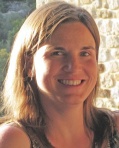 Kathleen Jamison is working with Gray’s Reef as Acting Deputy Superintendent through a NOAA leadership development program rotational assignment. Kathleen came to the Sanctuary from NOAA’s Office of Coast Survey in Silver Spring, Maryland, where she prepared budget scenarios for different funding levels, developed performance metrics, managed environmental compliance and worked with interns on geographic information systems projects. Originally from the Washington, DC area, Kathleen joined Coast Survey as a nautical cartographer in 2006 before moving into managing hydrographic survey projects, primarily in the Gulf of Mexico. Before coming to NOAA, she had a different career altogether as a grant writer for a non-profit supporting DC Public Charter Schools and as a division assistant for the National Endowment for the Arts. Kathleen received her B.A. in Humanities from University of Maryland and her M.S. in Geographic and Cartographic Sciences from George Mason University. In her spare time, Kathleen enjoys fair-weather camping, exploring Savannah, and walking the trails on Skidaway Island.
Kathleen Jamison is working with Gray’s Reef as Acting Deputy Superintendent through a NOAA leadership development program rotational assignment. Kathleen came to the Sanctuary from NOAA’s Office of Coast Survey in Silver Spring, Maryland, where she prepared budget scenarios for different funding levels, developed performance metrics, managed environmental compliance and worked with interns on geographic information systems projects. Originally from the Washington, DC area, Kathleen joined Coast Survey as a nautical cartographer in 2006 before moving into managing hydrographic survey projects, primarily in the Gulf of Mexico. Before coming to NOAA, she had a different career altogether as a grant writer for a non-profit supporting DC Public Charter Schools and as a division assistant for the National Endowment for the Arts. Kathleen received her B.A. in Humanities from University of Maryland and her M.S. in Geographic and Cartographic Sciences from George Mason University. In her spare time, Kathleen enjoys fair-weather camping, exploring Savannah, and walking the trails on Skidaway Island.
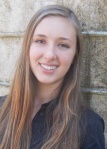 Gabriella Burns is a student-intern from the Savannah Arts Academy who will be volunteering at Gray’s Reef for the duration of the academic school year. Her program major is in communication arts and this internship is facilitated by a work-based learning program at her school. Gabriella hopes to study environmental science and possibly environmental law in college. While at Gray’s Reef she will be helping out with community outreach programs and assisting with administrative tasks.
Gabriella Burns is a student-intern from the Savannah Arts Academy who will be volunteering at Gray’s Reef for the duration of the academic school year. Her program major is in communication arts and this internship is facilitated by a work-based learning program at her school. Gabriella hopes to study environmental science and possibly environmental law in college. While at Gray’s Reef she will be helping out with community outreach programs and assisting with administrative tasks.
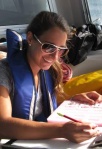 After graduating from Emory University in May 2014, Alison Scott began interning at Gray’s Reef National Marine Sanctuary. She is working on the acoustic telemetry project and is particularly interested in the detections of visiting species from all along the east coast. She is also helping topside of the R/V Sam Gray and R/V Ferguson. Alison is trained as a rescue diver and is preparing for her NOAA diver certification. Her interest in marine biology and environmental management stems from numerous education and work experiences. These include research of iron acquisition and carbon metabolism in Vibrio fisheri at the Skidaway Institute of Oceanography, and the biogeography of corals, sponges and algae in Discovery Bay, Jamaica with Stony Brook University.
After graduating from Emory University in May 2014, Alison Scott began interning at Gray’s Reef National Marine Sanctuary. She is working on the acoustic telemetry project and is particularly interested in the detections of visiting species from all along the east coast. She is also helping topside of the R/V Sam Gray and R/V Ferguson. Alison is trained as a rescue diver and is preparing for her NOAA diver certification. Her interest in marine biology and environmental management stems from numerous education and work experiences. These include research of iron acquisition and carbon metabolism in Vibrio fisheri at the Skidaway Institute of Oceanography, and the biogeography of corals, sponges and algae in Discovery Bay, Jamaica with Stony Brook University.
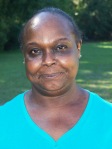 Patricia Furman has joined the MAREX team as a maintenance worker. Her primary duties are to keep the dorm and public spaces in top shape for student groups and daily visitors.
Patricia Furman has joined the MAREX team as a maintenance worker. Her primary duties are to keep the dorm and public spaces in top shape for student groups and daily visitors.
Morgan Linney will be interning this fall in Aron Stubbins’ lab at Skidaway Institute. She is a 2014 graduate of Mount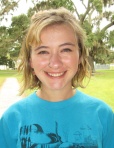 Holyoke College. While still a student, Morgan spent a semester at the Duke Marine Lab and also conducted research at the National Institute of Environmental Health Sciences at the University of Washington Friday Harbor Lab. She just returned from her first research cruise with the Zehr Lab from the University of California—Santa Cruz. It began in San Diego and ended in Honolulu. Morgan is originally from Efland, N.C.
Holyoke College. While still a student, Morgan spent a semester at the Duke Marine Lab and also conducted research at the National Institute of Environmental Health Sciences at the University of Washington Friday Harbor Lab. She just returned from her first research cruise with the Zehr Lab from the University of California—Santa Cruz. It began in San Diego and ended in Honolulu. Morgan is originally from Efland, N.C.

